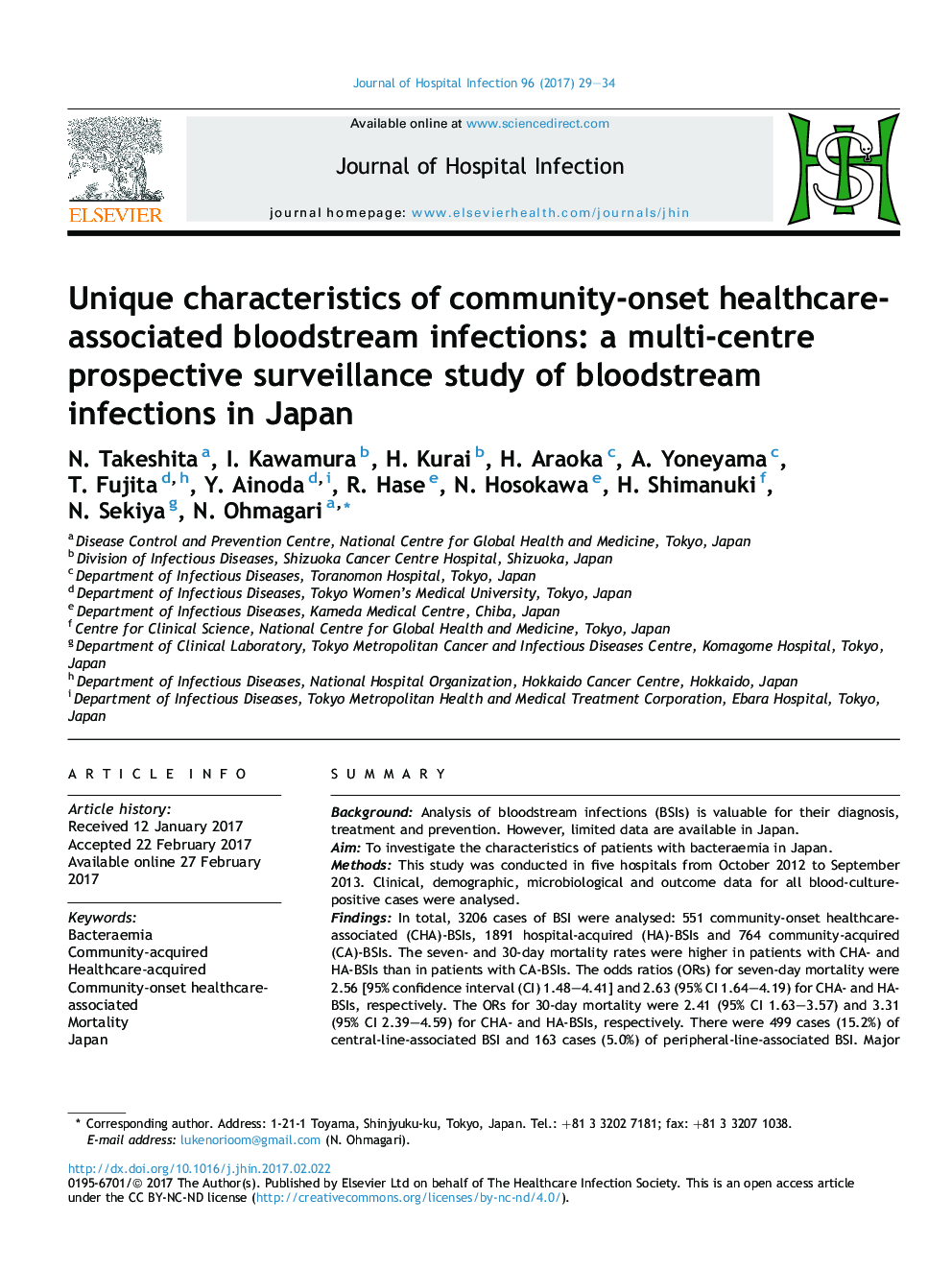| Article ID | Journal | Published Year | Pages | File Type |
|---|---|---|---|---|
| 5668339 | Journal of Hospital Infection | 2017 | 6 Pages |
SummaryBackgroundAnalysis of bloodstream infections (BSIs) is valuable for their diagnosis, treatment and prevention. However, limited data are available in Japan.AimTo investigate the characteristics of patients with bacteraemia in Japan.MethodsThis study was conducted in five hospitals from October 2012 to September 2013. Clinical, demographic, microbiological and outcome data for all blood-culture-positive cases were analysed.FindingsIn total, 3206 cases of BSI were analysed: 551 community-onset healthcare-associated (CHA)-BSIs, 1891 hospital-acquired (HA)-BSIs and 764 community-acquired (CA)-BSIs. The seven- and 30-day mortality rates were higher in patients with CHA- and HA-BSIs than in patients with CA-BSIs. The odds ratios (ORs) for seven-day mortality were 2.56 [95% confidence interval (CI) 1.48-4.41] and 2.63 (95% CI 1.64-4.19) for CHA- and HA-BSIs, respectively. The ORs for 30-day mortality were 2.41 (95% CI 1.63-3.57) and 3.31 (95% CI 2.39-4.59) for CHA- and HA-BSIs, respectively. There were 499 cases (15.2%) of central-line-associated BSI and 163 cases (5.0%) of peripheral-line-associated BSI. Major pathogens included coagulase-negative staphylococci (N = 736, 23.0%), Escherichia coli (N = 581, 18.1%), Staphylococcus aureus (N = 294, 9.2%) and Klebsiella pneumoniae (N = 263, 8.2%). E. coli exhibited a higher 30-day mortality rate among patients with HA-BSIs (22.3%) compared with patients with CHA-BSIs (12.3%) and CA-BSIs (3.4%). K. pneumoniae exhibited higher 30-day mortality rates in patients with HA-BSIs (22.0%) and CHA-BSIs (22.7%) compared with patients with CA-BSIs (7.8%).ConclusionCHA- and HA-BSIs had higher mortality rates than CA-BSIs. The prognoses of E. coli- and K. pneumonia-related BSIs differed according to the category of bacteraemia.
